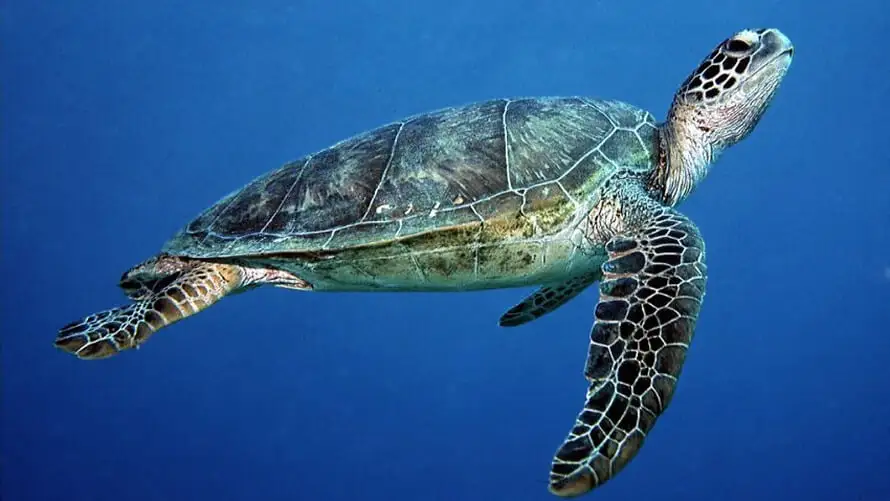FEATURES
| Class: Reptiles Size: They can reach up to one meter in length and 130-160 kg in weight. Colour: Their shell is green to dark brown. Behaviour: They are diurnal and spend most of their day eating. They migrate long distances between their feeding and nesting areas. Diet: They feed mainly on plants, eating sea grasses and seaweed such as Posidonia oceanica and Cymodocea nodosa. |
The green turtle (Chelonia mydas) is the largest of the hard-shelled sea turtles. Its common name comes from the stored green fat under its shell, due to its diet consisting entirely of sea grasses.
It can be found in tropical and subtropical seas around the world, with two distinct populations in the Atlantic and Pacific Oceans, but it is also found in the Indian Ocean. Sea turtles are a migratory species. In fact, in the Mediterranean the Green Turtles almost exclusively use the beaches of Cyprus and Turkey for nesting. In Cyprus, one of their main nesting sites is the Lara/Toxeftra Reserve, in Paphos.
Male sea turtles are characterised by their long tail and never return to land, while females are philopatric, meaning they return to the same beach where they were hatched to lay their eggs. During the breeding season, the females come out at night on sandy beaches and lay their eggs in sand pits which they dig high up the beach. They lay 100 or more eggs at a time and may lay several clutches in one breeding season. This is done by each female every 2-5 years or so.
Sex in turtles is determined by the temperature of the sand in the nest, with female turtles hatching at higher temperatures and males at colder temperatures. The eggs hatch after about 7 weeks. The hatchlings emerge from the nest and follow the brightest point on the horizon, i.e. the reflection of the moon in the sea. If there is another bright spot in the area, the turtles become disoriented and do not head for the water, and as a result they die. Only 1-2 out of 1000 eggs survive to reach their reproductive age of around 25- 30 years. Their breeding season runs from May to October.
The species is classified by the International Union for Conservation of Nature (IUCN) as Endangered (Population in decline). Among the main threats to the species in Cyprus are coastal development, habitat loss, pollution, overfishing, collision with boats and illegal poaching.




